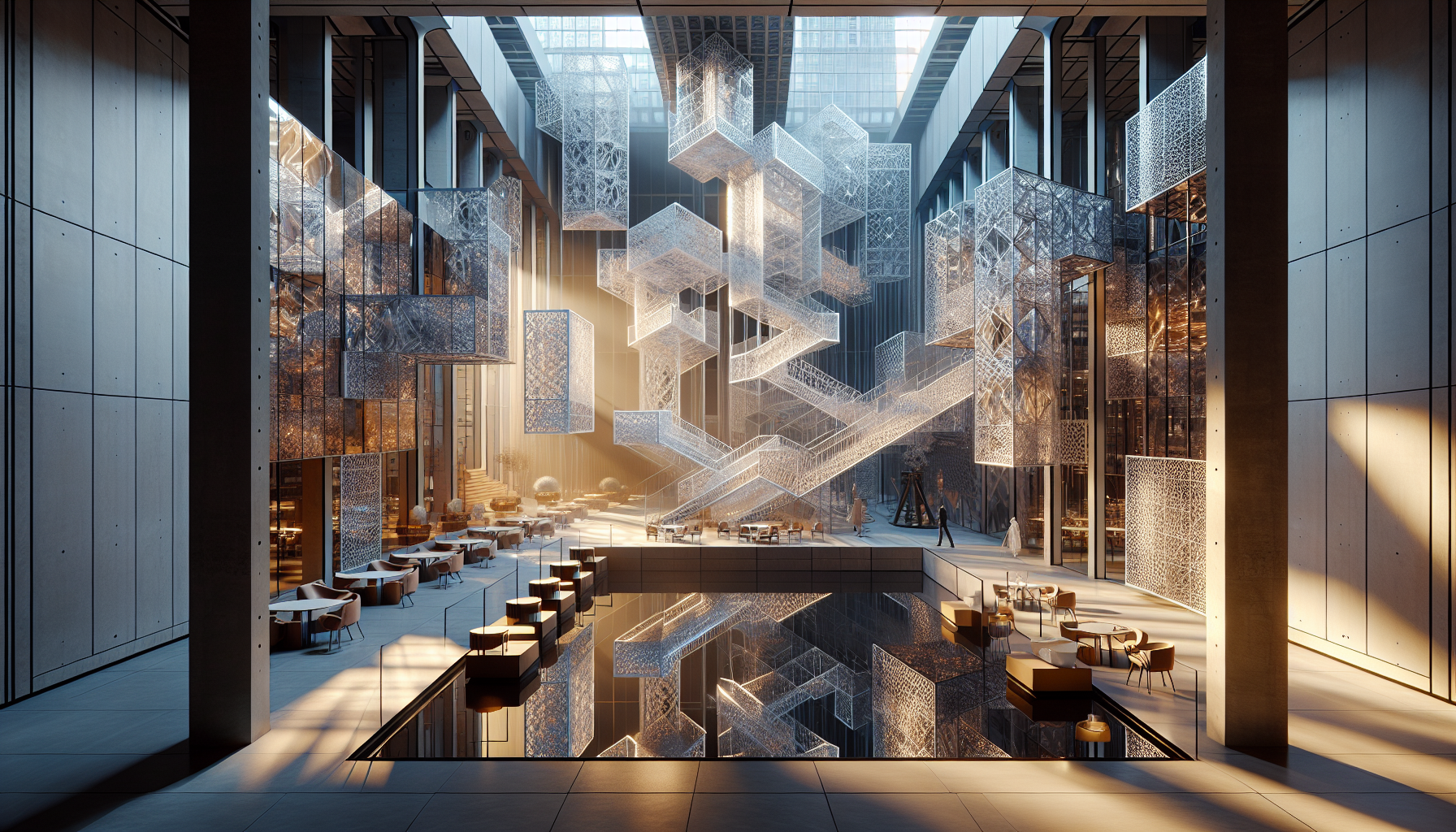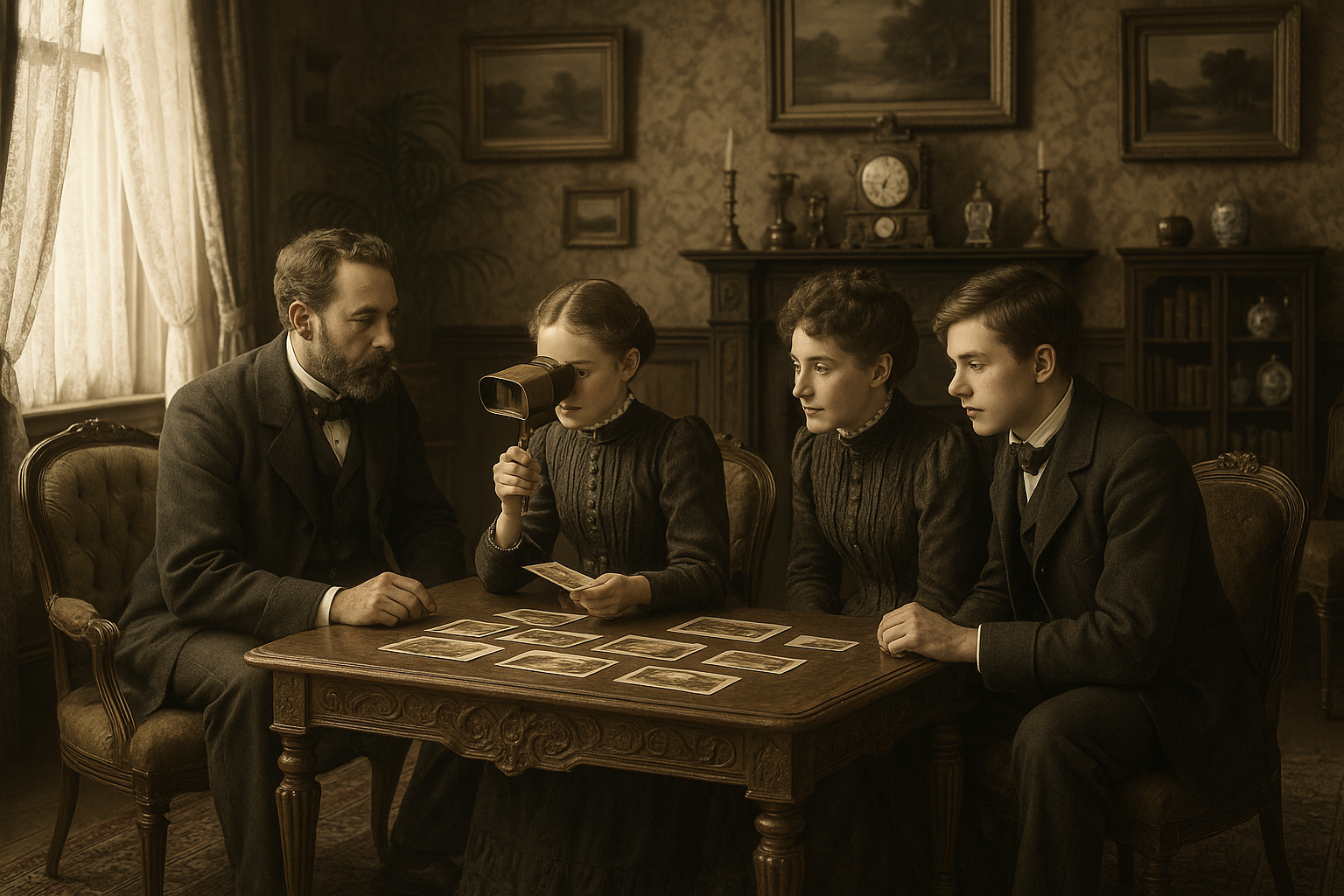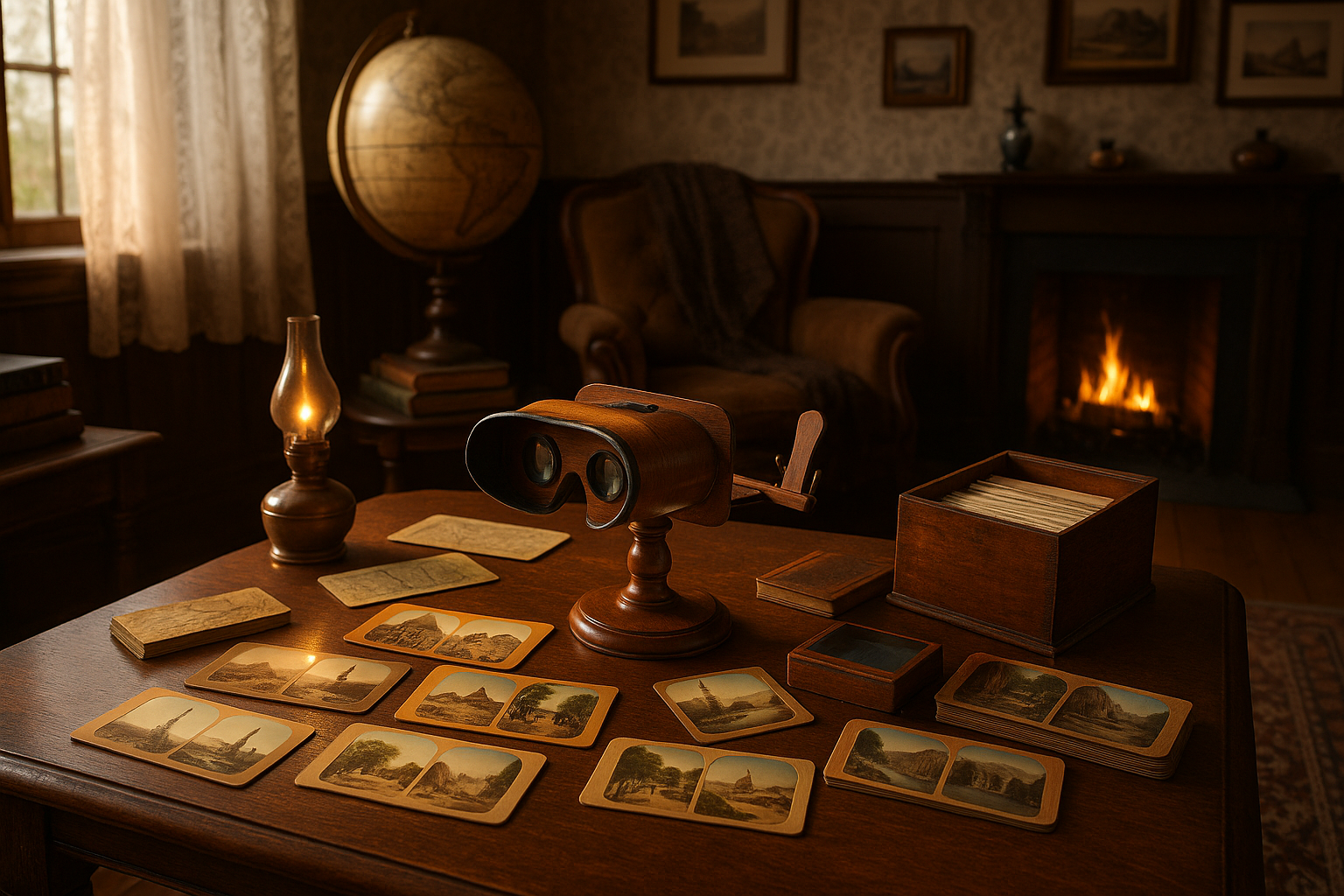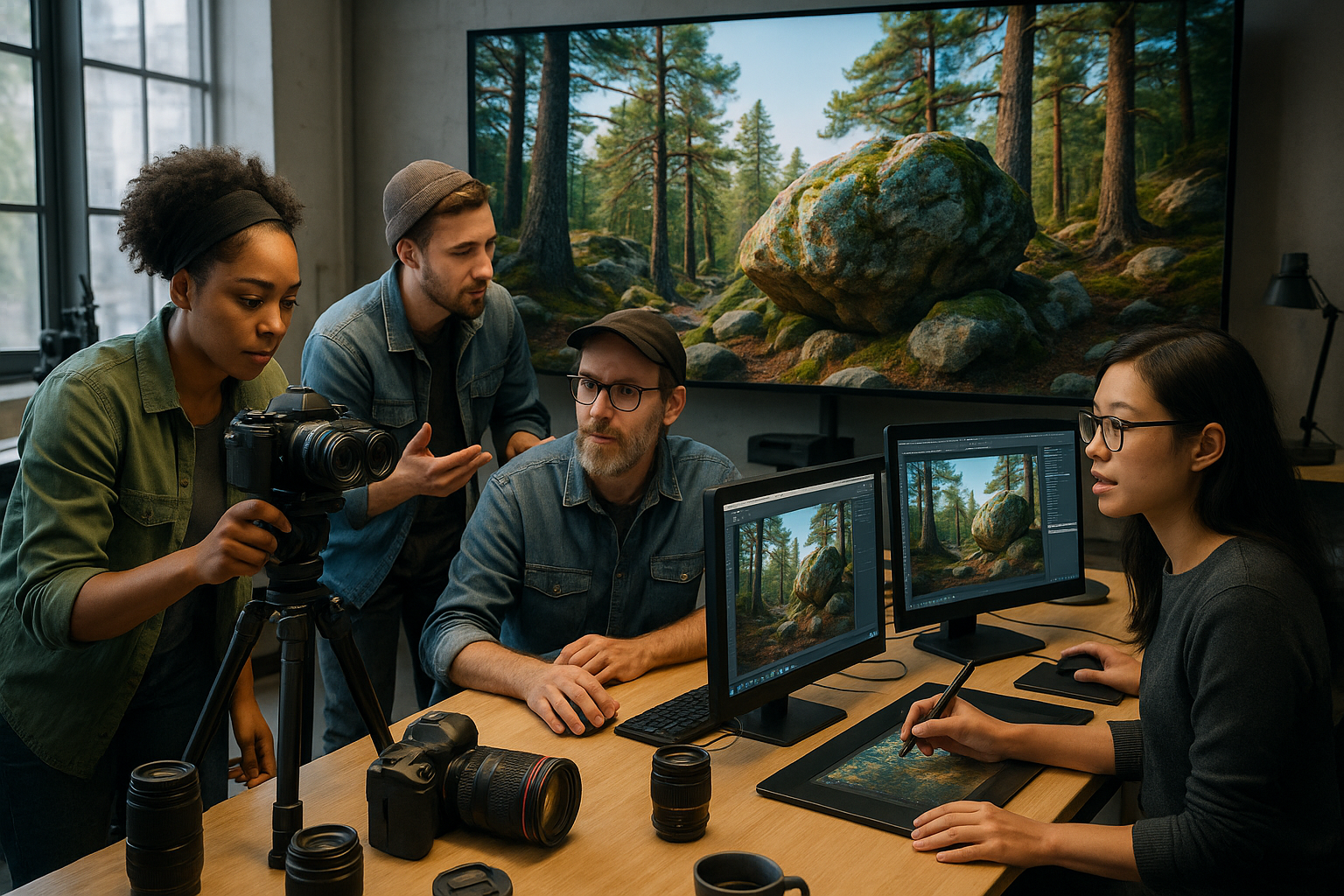In the vast realm of architecture, there exists a tantalizing allure to the unknown—a world where shadows dance, light plays tricks on the eye, and the boundaries of space and perception blur into an enigmatic tapestry. Welcome to the intriguing universe of Architectural Obscura, where installations challenge our conventional understanding of structure and form, inviting us to explore the unseen dimensions that lie just beyond the surface. This article takes you on a journey into this mysterious domain, uncovering the secrets and wonders hidden within these innovative creations.
At the heart of Architectural Obscura lies a profound exploration of perception and reality. These installations are not merely physical constructs; they are dynamic experiences that engage the senses and provoke thought. Through clever use of materials, light, and space, architects and artists create environments that invite viewers to question what they see and how they interact with the world around them. This interplay between illusion and reality is where the true magic happens, leaving visitors both bewildered and inspired. 🌌
As we delve deeper into this fascinating topic, we’ll uncover the historical roots of Architectural Obscura, tracing its evolution from early experiments in optical illusion to modern-day masterpieces that defy categorization. We’ll explore the pioneers who dared to push the boundaries of architectural design, creating works that challenge our perceptions and ignite our imaginations. From the mysterious light play of James Turrell’s installations to the disorienting spatial manipulations of Olafur Eliasson, these artists have redefined what architecture can be, turning it into a powerful medium for exploration and discovery.
In addition to exploring the historical and artistic context, we’ll also examine the psychological impact of these installations on viewers. Why do we find ourselves so drawn to the mysterious and the unseen? What is it about these spaces that captivates our imagination and evokes such strong emotional responses? Through interviews with architects, psychologists, and art critics, we’ll uncover the deeper layers of meaning and significance that Architectural Obscura holds for its audience. This multidimensional approach will provide a comprehensive understanding of how these installations not only alter our perception of space but also affect our inner worlds.
Finally, we’ll look to the future, exploring the potential for Architectural Obscura to influence the next generation of architects and designers. As technology continues to evolve, so too do the possibilities for creating ever more complex and immersive installations. We’ll consider the role of virtual reality, augmented reality, and other emerging technologies in shaping the future of this art form. What new dimensions will be unveiled as we continue to explore the boundaries of architecture and perception? The answers lie in the creative minds of those who dare to dream beyond the visible, inviting us all to discover the wonders that await in the world of Architectural Obscura. 🏛️✨
The Mysterious Appeal of Architectural Obscura
The world of architecture is vast and varied, often extending beyond traditional boundaries to explore the limits of creativity and perception. One such intriguing dimension is architectural obscura, which delves into the lesser-known aspects and mysterious allure of architectural design. This genre challenges conventional norms, encouraging both architects and observers to rethink the purpose and impact of structures.
Architectural obscura encompasses installations that play with perception, scale, and context. These installations are not merely buildings or structures; they are immersive experiences designed to provoke thought and inspire curiosity. Unlike typical architecture, which often prioritizes functionality and aesthetics, architectural obscura emphasizes the unseen dimensions of design. This approach invites viewers to engage more deeply with the space, questioning their assumptions about architecture and its role in the world.
One of the most fascinating aspects of architectural obscura is its ability to transform ordinary spaces into extraordinary experiences. By manipulating light, shadow, and form, architects can create installations that defy expectations and challenge perceptions. These works often serve as a bridge between art and architecture, blurring the lines between the two disciplines and opening up new possibilities for creative expression. In this way, architectural obscura not only expands our understanding of architecture but also enriches our experience of the built environment.
Key Characteristics of Architectural Obscura Installations
Architectural obscura installations are distinguished by several key characteristics that set them apart from traditional architectural projects. These characteristics not only define the genre but also enhance the viewer’s experience, making each installation a unique encounter with the unexpected.
Firstly, these installations often prioritize interactivity and engagement. Unlike conventional architecture, which is typically static and passive, architectural obscura invites viewers to become active participants in the experience. By engaging with the installation, viewers can uncover hidden layers of meaning and gain a deeper appreciation for the complexities of architectural design.
| Characteristic | Traditional Architecture | Architectural Obscura |
|---|---|---|
| Purpose | Functionality and Aesthetics | Perception and Engagement |
| Materials | Conventional | Innovative |
| Viewer Interaction | Passive | Interactive |
Finally, these installations often seek to create a dialogue between the viewer and the space. Through the use of unexpected forms and materials, architectural obscura installations challenge viewers to reconsider their assumptions about architecture and its role in the world. By fostering this dialogue, these installations encourage a more nuanced and meaningful engagement with the built environment.
Examples of Architectural Obscura Around the World
Architectural obscura installations can be found across the globe, each offering a unique interpretation of the genre. From urban centers to remote landscapes, these installations capture the imagination and inspire awe through their innovative designs and thought-provoking concepts.
One notable example is the Serpentine Pavilion in London, an annual architectural commission that invites designers to create a temporary structure in Kensington Gardens. Each year’s pavilion offers a new take on architectural obscura, exploring themes such as light, transparency, and space. These pavilions not only showcase cutting-edge design but also encourage public interaction, inviting visitors to experience the installations firsthand.
Another striking example is the “Cloud Gate” sculpture in Chicago, also known as “The Bean.” Although primarily an art installation, its seamless stainless-steel surface and reflective properties create a sense of architectural obscura by distorting the surrounding skyline and inviting viewers to engage with the space in new and unexpected ways.
These examples demonstrate the global appeal and versatility of architectural obscura, highlighting the diverse ways in which this genre can be interpreted and experienced. As more architects and designers explore this intriguing dimension of architecture, we can expect to see even more innovative and thought-provoking installations in the future.
- Serpentine Pavilion, London
- Cloud Gate, Chicago
- The Blur Building, Yverdon-les-Bains
The Impact of Architectural Obscura on Society
Architectural obscura installations have a profound impact on society, challenging traditional notions of architecture and inspiring new ways of thinking about the built environment. These installations encourage a more dynamic and interactive relationship between people and space, fostering a sense of wonder and curiosity that extends beyond the confines of the installation itself.
By engaging viewers in this way, architectural obscura has the potential to reshape our understanding of public spaces and their role in society. These installations often serve as catalysts for community engagement, sparking conversations and encouraging collaboration among diverse groups of people. Through this process, architectural obscura can help to build stronger, more connected communities that value creativity and innovation.
Furthermore, architectural obscura installations can also serve as a powerful tool for education and outreach. By introducing new and innovative concepts in architecture, these installations can inspire the next generation of architects and designers, encouraging them to think critically about the built environment and explore new possibilities for creative expression.
For those interested in learning more about architectural obscura, check out the insightful video below from the “Art and Architecture Channel” on YouTube:
Understanding Architectural Obscura – Art and Architecture Channel

Conclusion
Conclusion: Unveiling the Enigmatic World of Architectural Obscura
As we bring this exploration of the “Architectural Obscura” to a close, it’s essential to reflect on the captivating journey we’ve undertaken through this unique realm of architectural design and installations. The journey through Architectural Obscura has been nothing short of a revelation, uncovering unseen dimensions and offering a fresh perspective on the built environment.
Firstly, we delved into the concept of Architectural Obscura itself, understanding it as a discipline that transcends traditional architecture by engaging with the hidden, overlooked, and often enigmatic aspects of space. This approach challenges the conventional narratives of architectural design, inviting both creators and observers to look beyond the surface and delve into the deeper stories and emotions embedded within structures.
The role of installations in this context cannot be overstated. Installations act as the physical manifestations of Architectural Obscura, offering a tangible experience of its principles. They serve as immersive environments where audiences can engage directly with the spatial, sensory, and conceptual layers that define this movement. Through installations, architecture becomes a narrative medium, capable of conveying complex themes and emotions in a way that static structures alone cannot.
A key point discussed was the integration of technology in Architectural Obscura. We explored how digital tools and innovations, such as augmented reality (AR) and virtual reality (VR), have revolutionized the way installations are conceived and experienced. These technologies enable the creation of dynamic, interactive environments that respond to the presence and actions of the observer, thereby personalizing the architectural experience.
Furthermore, the importance of interdisciplinary collaboration was highlighted as a vital component of Architectural Obscura. By bringing together architects, artists, technologists, and other creatives, the field is enriched with diverse perspectives and skills, leading to more innovative and thought-provoking installations. This collaborative spirit not only enhances the creative process but also ensures that the final installations resonate with a wider audience.
The social and cultural implications of Architectural Obscura were also addressed, emphasizing its potential to challenge societal norms and inspire change. By uncovering hidden dimensions and narratives, these installations encourage viewers to question their perceptions and consider alternative viewpoints. This aspect of Architectural Obscura aligns with the broader movement in contemporary art and design that seeks to provoke thought and dialogue around critical issues.
In terms of practical application, Architectural Obscura offers a wealth of opportunities for architects and designers to reimagine spaces in both public and private domains. Whether transforming urban landscapes or enhancing interior environments, the principles of this approach can be applied to create spaces that are not only functional but also engaging and inspiring. This potential for transformation underscores the relevance and importance of Architectural Obscura in today’s world.
As we conclude this exploration, it is clear that Architectural Obscura is more than just a niche field within architecture. It represents a paradigm shift in how we conceive and experience spaces, offering a richer, more nuanced understanding of the built environment. The enigmatic world of Architectural Obscura invites us to embrace curiosity, creativity, and a willingness to see beyond the obvious.
We encourage you, our readers, to continue this exploration beyond the confines of this article. Engage with installations, seek out new experiences, and allow yourself to be inspired by the hidden dimensions of the spaces around you. Whether you are a professional in the field, a student, or simply an enthusiast, there is much to discover and learn from this captivating world.
In the spirit of fostering a community of curiosity and innovation, we invite you to share your thoughts and experiences. Have you encountered an installation that resonated with you? How do you see the principles of Architectural Obscura influencing your work or daily life? We would love to hear your insights and stories, so please feel free to comment below.
Moreover, sharing this article with others who might be interested in Architectural Obscura can help spread awareness and appreciation for this unique discipline. By doing so, you contribute to a broader dialogue about the role of architecture in shaping our perceptions and experiences.
For those eager to delve deeper, numerous resources are available to expand your understanding of this fascinating subject. We recommend visiting the following active links for further reading and exploration:
1. ArchDaily – Architectural Obscura: Exploring the Unseen
2. Dezeen – Innovations in Architectural Installations
3. Designboom – The Role of Technology in Architecture
In conclusion, the world of Architectural Obscura beckons us to look beyond the obvious and embrace the unknown. It challenges us to redefine our relationship with space and to see the built environment as a canvas for storytelling and exploration. As we continue to navigate the complexities of our modern world, the insights gained from this journey into Architectural Obscura will undoubtedly inspire and guide us toward a more imaginative and thoughtful future. 🌟
Toni Santos is a visual historian and artisan whose creative lens is captivated by the forgotten marvels of antique optical devices. Through his thoughtful storytelling, Toni revives the instruments that once transformed light into wonder—camera obscuras, magic lanterns, kaleidoscopes, and other ingenious tools that shaped our earliest visual imaginations.
His journey is rooted in a fascination with how humans have long sought to bend, reflect, and reveal the unseen. Whether tracing the mechanical poetry of 19th-century projectors or illustrating the tactile elegance of early lenses, Toni’s work invites us to see vision itself as an evolving art form.
Blending handcrafted design with historical inquiry, Toni brings to life the material soul of these devices—celebrating not just how they functioned, but what they meant. His creations and curated stories illuminate a world where science, illusion, and beauty were intricately linked through glass and brass.
As the curator of Vizovex, Toni shares detailed studies, reconstructed artifacts, and immersive content that help others rediscover the origins of visual technology and the magic of analog perception.
His work is a tribute to:
The craftsmanship behind early visual instruments
The wonder of seeing through the eyes of another century
The intersection of optics, art, and imagination
Whether you’re a collector, a designer, or someone drawn to the lost poetry of vision, Toni welcomes you into a world where light is a storyteller—one prism, one lens, one forgotten invention at a time.





